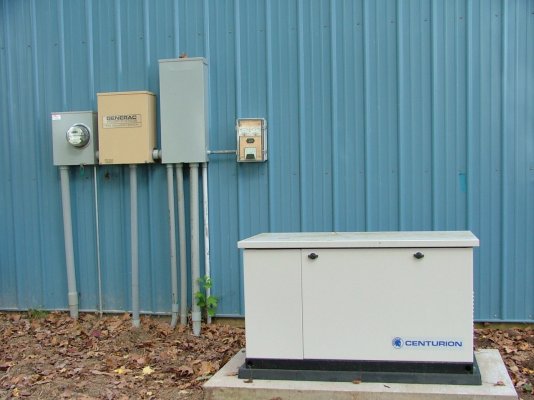It's sort of bad to be without A/C, but fans and fridge?
Running a fridge from an inverter and battery would require a bank of several golf-cart batteries, as I tried to point out earlier. An average 18 cu.ft. fridge consumes 1.5KWhr a day, according to an EPA Web site. To store that energy in deep cycle golf-cart batteries so that one only runs the generator to charge them once a day, it would require 4 batteries, each storing 125Ah at 6V and discharged to 50% for longer life.
4 * 125 Amp-hr * 6V * 50% = 1500Wh.
That's probably $500 worth of battery to store 20c worth of electric energy.
Given that, a 2KW inverter/generator as I described earlier, the same as what FIRed bought, does not look too bad for $1000. And it will also run a small A/C.
I would need a 20KW genset to run the central air, but I will not spend that money. For a bit more money, one can get a used class C RV to use as an escape pod, and it also has recreation usage.
As I described, I could use the genset built into my RV in an emergency, but it is noisy if one runs it non-stop. So, the portable 2KW genny looks very tempting. I do not have a small window A/C ($150) or a portable free-standing one ($350), but should look into getting one to have a survival room. My wife will classify that as a toy rather than a necessity. Women!
PS. I researched the Volt and found that its battery has a capacity of 18KWhr or 10X that of the Prius. For a long-life of many thousands of discharge cycles, GM limits the depth of discharge to 50%. That still leaves one with a very usable capacity of 9KWhr.
Some engineers at GM have probably been busy proposing an R&D program to the management about an add-on equipment package option to the Volt.


 )
)